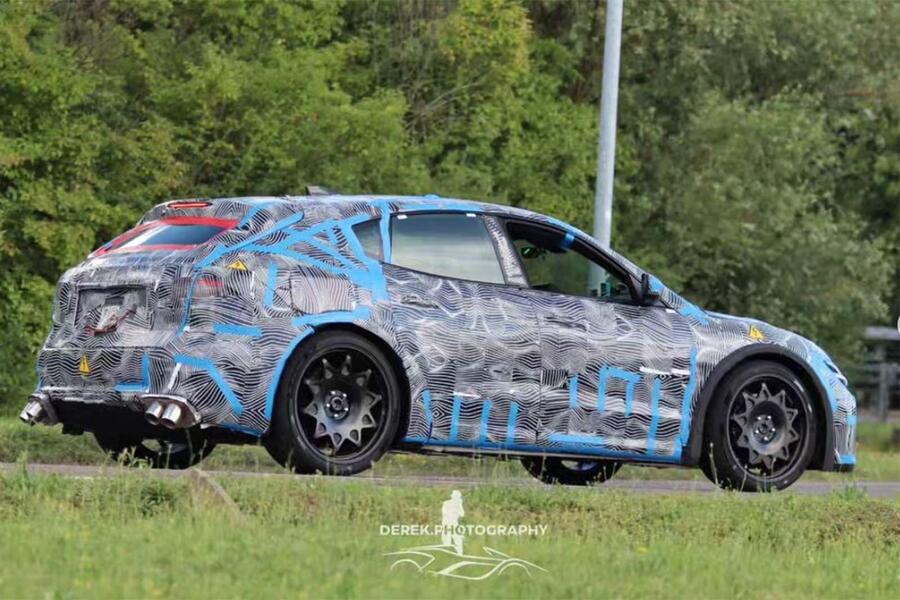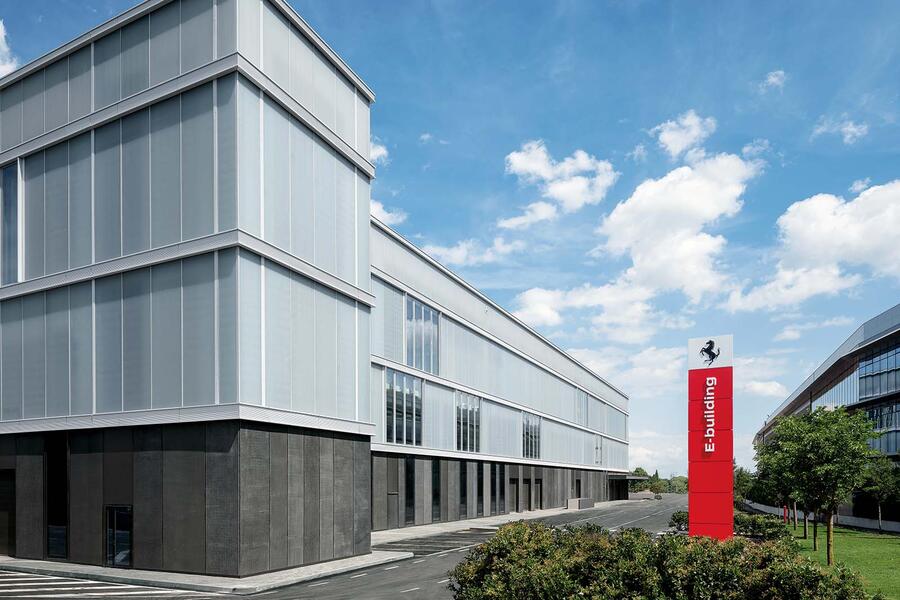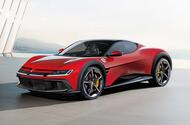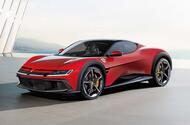The EV will be revealed late this year before going on sale in 2026
Ferrari’s CEO said the firm will unwrap its future at its Capital Markets Day, hinting at debut for EV
Ferrari is set to reveal its long-awaited debut electric car on 9 October.
In an announcement accompanying the Italian firm’s 2024 financial figures, CEO Benedetto Vigna said Ferrari will “reveal more of our future on 9 October at our Capital Markets Day”.
He stopped short of confirming any more details, but said it would be presented “in a unique and innovative way”.
That will be a year since Ferrari revealed its new F80 halo hypercar, which is due to begin deliveries around autumn 2025 – so it promises to be a particularly busy period in Maranello. Ferrari is also expected to reveal follow-ups to the Roma and SF90 Stradale this year, though has not said whether these will form part of the Capital Markets Day announcements.
Overall, Vigna said the firm will roll out six new cars in 2025.
Vigna said the firm expects “further robust growth” this year in the run-up to that date, following a year in which Ferrari significantly increased revenues and profits.
Although car deliveries were up just 0.7% year-on-year in 2024, at 13,752 units, Ferrari posted a revenue uptick of 12% – to €6.7bn – of which €1.53bn was profit, a 21% increase.
Vigna attributed the hikes to “quality of revenues over volumes”, highlighting the impact of a “strong product mix and a growing demand for personalisations”.
Production of the Portofino M, SF90 Stradale, 812 and Roma was phased out during 2024, to allow Ferrari to ramp up output of the Purosangue, Roma Spider, 296 GTS, SF90 XX and 12Cilindri. The 296 and SF90 hybrid model lines accounted for 51% of Ferrari’s total shipments.
Deliveries of the ultra-exclusive Daytona SP3 and 499P Modificata specials helped to “enrich” the product mix, Ferrari said, along with customers more extensively personalising their cars.
Vigna recently told Autocar that Ferrari’s first electric car has already completed several thousand miles of on-road testing and promised it will be made “in the right way” to ensure buyers can “have a lot of fun”.
The Italian firm has yet to give any details about what form its first battery-electric vehicle will take, but recent spy shots show what are understood to be test mules using modified Maserati Levante bodywork. Whether it will be obviously comparable with the Levante in silhouette remains to be seen.
Notably, though, Ferrari used Maserati’s SUV as the basis for the first Purosangue prototypes and that car is radically different from its Italian contemporary – while still sitting high off the ground and having rear seats.
It is possible Ferrari could seek to emulate the characteristic dynamic qualities of its combustion cars by centralising the mass of the batteries in the chassis – much in the way that its current cars are either front-mid-engined or rear-mid-engined. Vigna said he expects the new EV to appeal to both existing Ferrari customers and tech-savvy newcomers to the brand.

He added: “There is not a pattern really. People buy a Ferrari because when they buy a Ferrari, they have a lot of fun. They don’t buy a Ferrari because A, B, C, D or a single element. It’s a combination of things. When we do electric cars, we will produce them in the right way.
“Consider that we have prototypes already on the road that have done several thousand kilometres, and we have in our company very qualified clients: test drivers. The first clients of our cars are the test drivers. They drive a lot of cars, and they can easily make a comparison between one and another, so for us this is an important metric that we are making a reference to.”
Reports from Reuters have suggested that the new EV will be priced from $500,000 (£395,000) and claimed that a second electric model is already under development. Vigna called those reports “a surprise” and declined to confirm any of those details. He added: “The way we define the price of a car is one month before we launch it.”
The Ferrari EV will be produced in the firm’s new E-building, which has recently been opened on its Maranello campus.
The facility contains an advanced new production line, which is likely to start operations with the Purosangue and SF90 before the EV joins in 2026.
The new production line will not replace either of Ferrari’s two existing lines, but the firm refused to be drawn on whether it will increase capacity.
Vigna said Ferrari will offer internal combustion, hybrid and electric models in the future but insisted that the sales split between those models will not be set by sales or production targets but by customer demand. “We always refer to what is our offer, not ‘what are the sales?’” said Vigna.
“Forecasting the sales by the kind of propulsion is an act of arrogance, a lack of respect to the client. We will never talk about sales splits.
“How can we understand what the client wants? We’re not talking about computers selecting a car. We’re talking about human beings with emotion.”

The E-building will help Ferrari reduce development times and increase the level of personalisation that it can offer, which is key to the company’s goal of increasing “revenue quality over quantity”.
It will also eventually house production of all of Ferrari’s powertrains, including high-voltage batteries, electric motors and axles that will be used for its future electric models.
Bringing production of those key electric components in-house is vital to the firm’s ambitions to ensure that its electric models have points of difference from rivals and that it can continue to service all its models in the future. Ferrari will buy its battery cells from a number of unspecified providers.
Vigna declined to give any information about which firms it will use but did drop a hint about battery technology. He said: “You hear people in the market going for LFP [lithiumiron-phosphate] batteries. Well, LFP batteries are not for Ferrari. It’s not good for us.”


